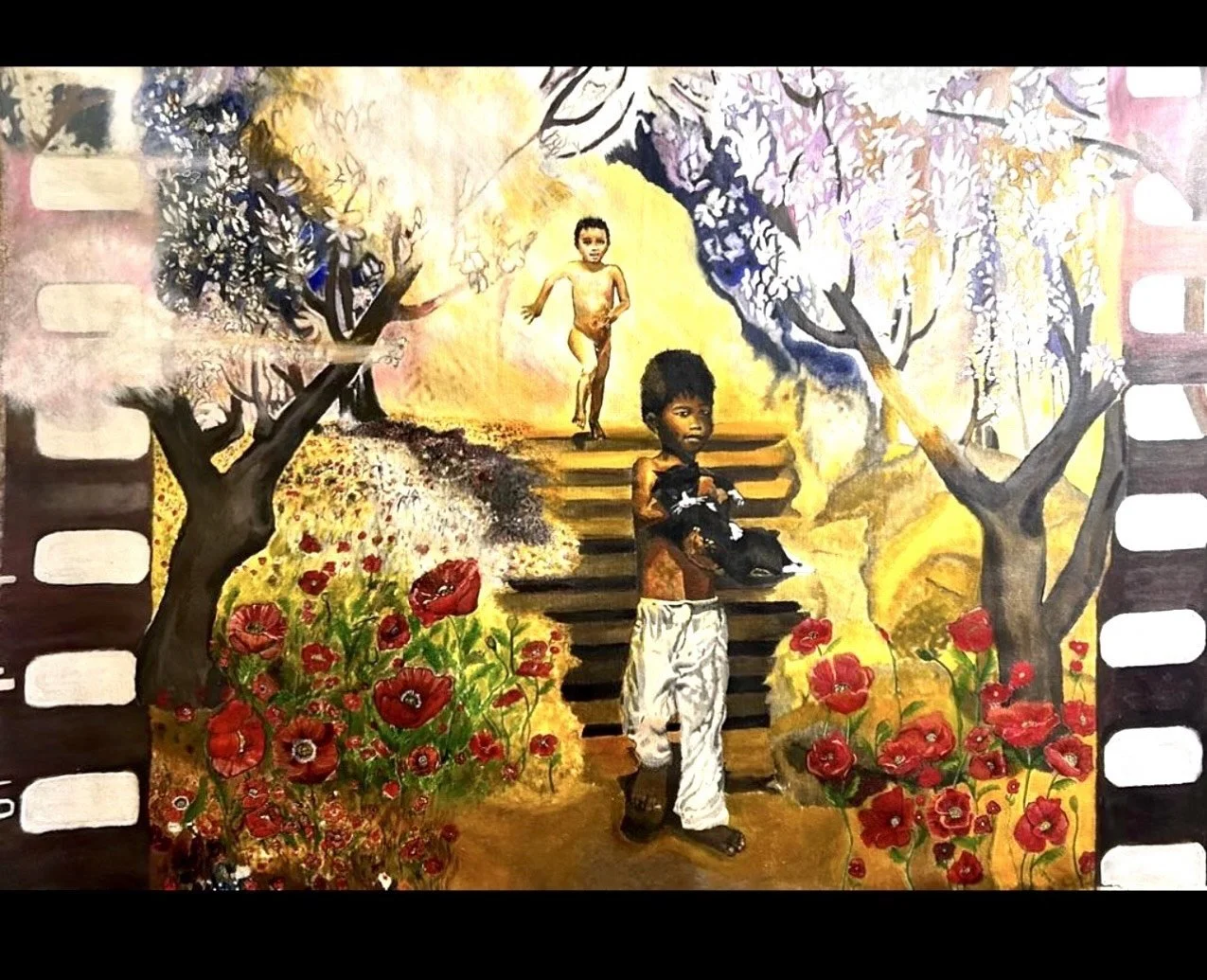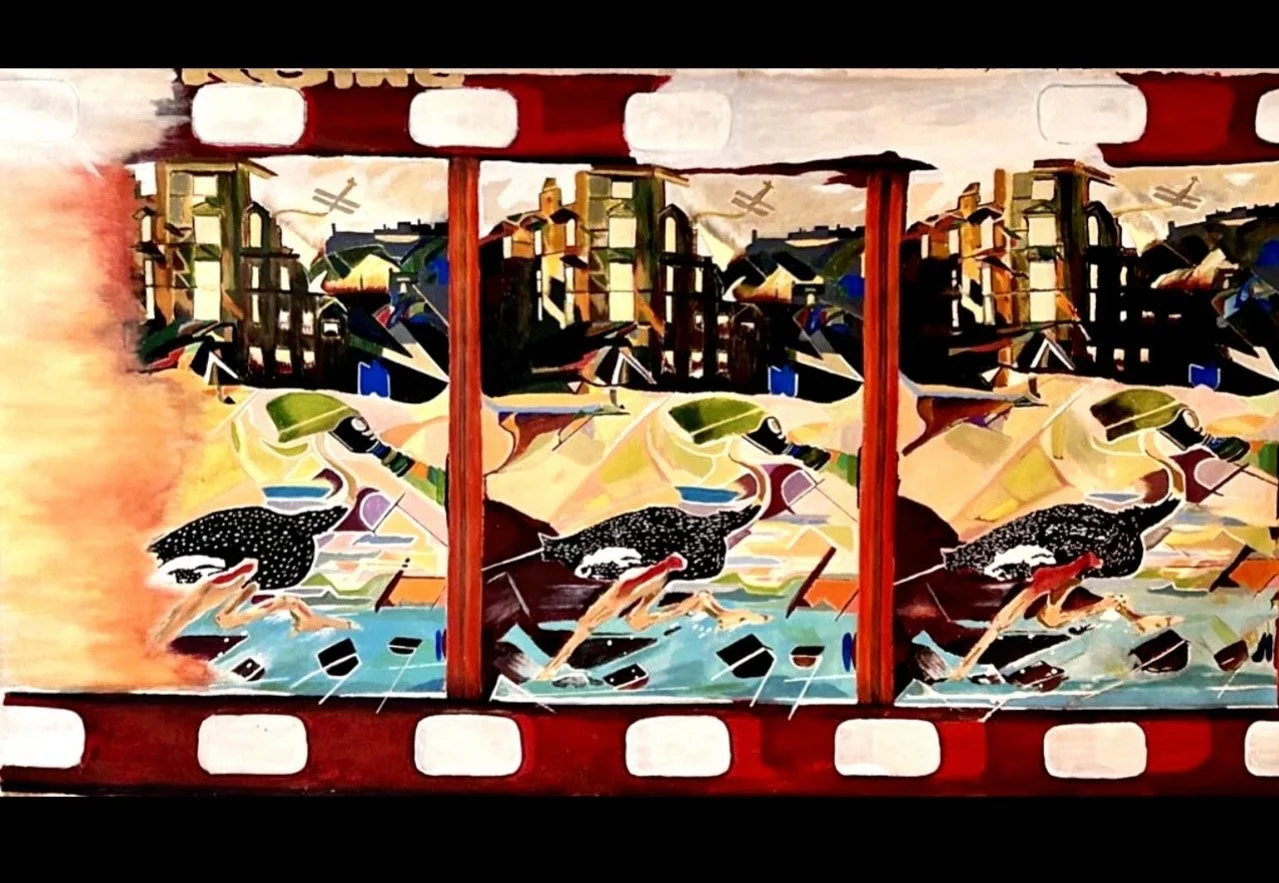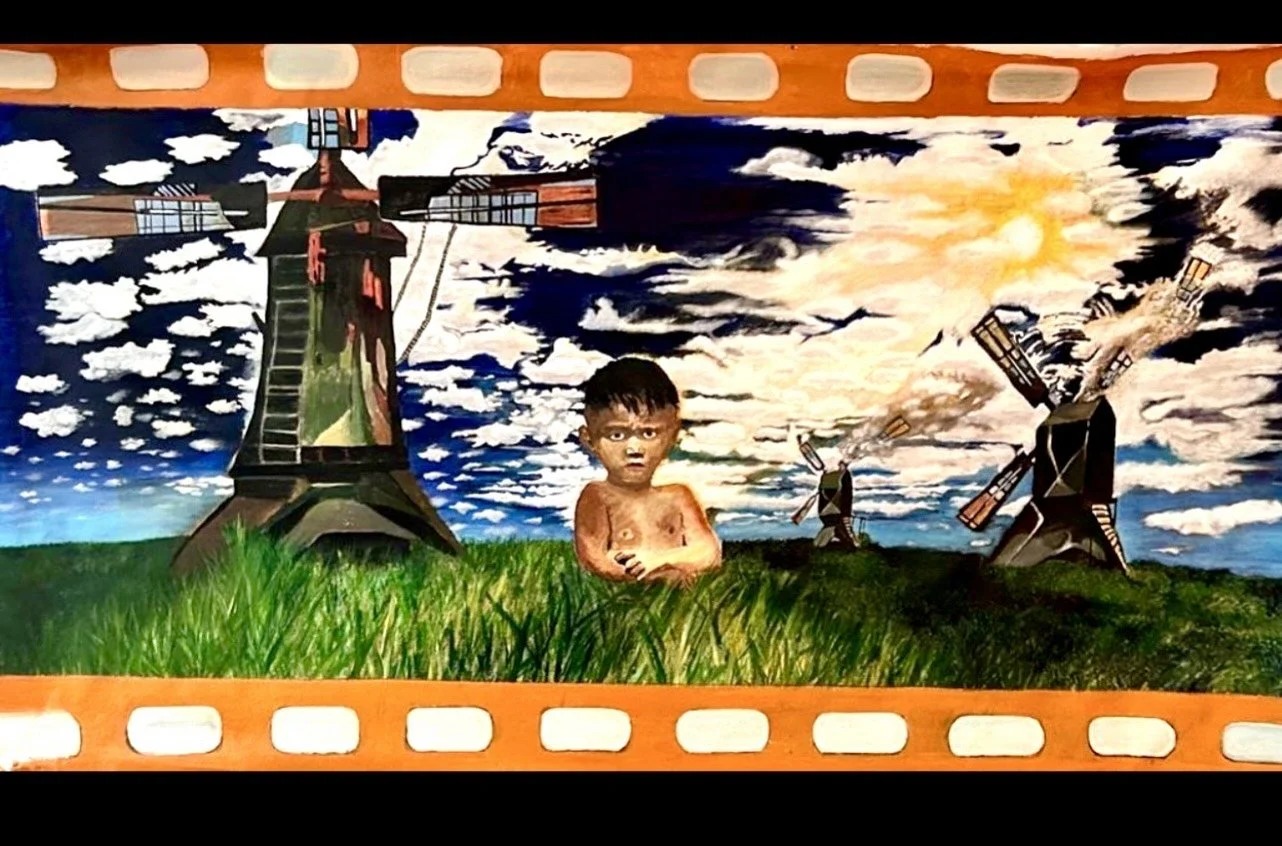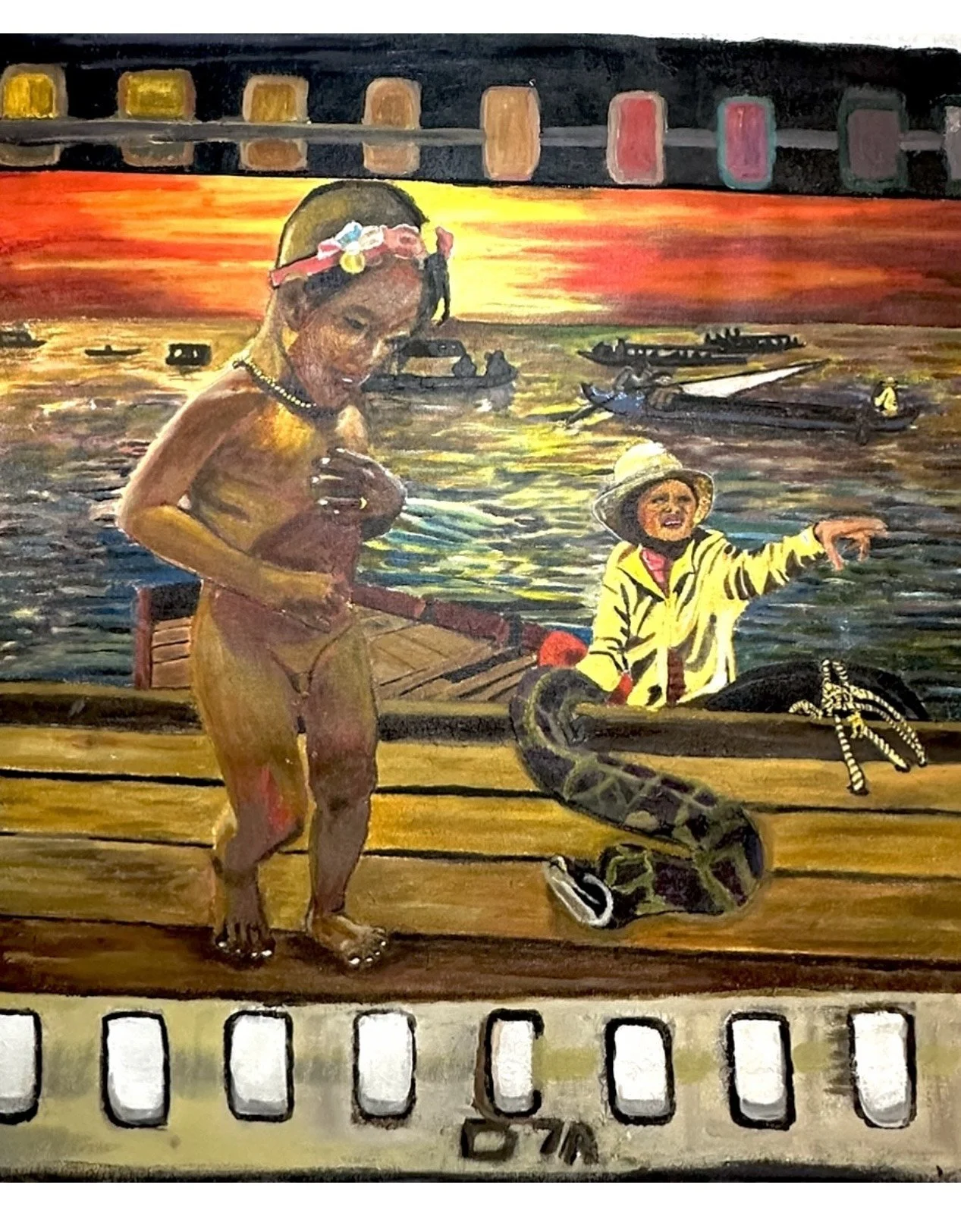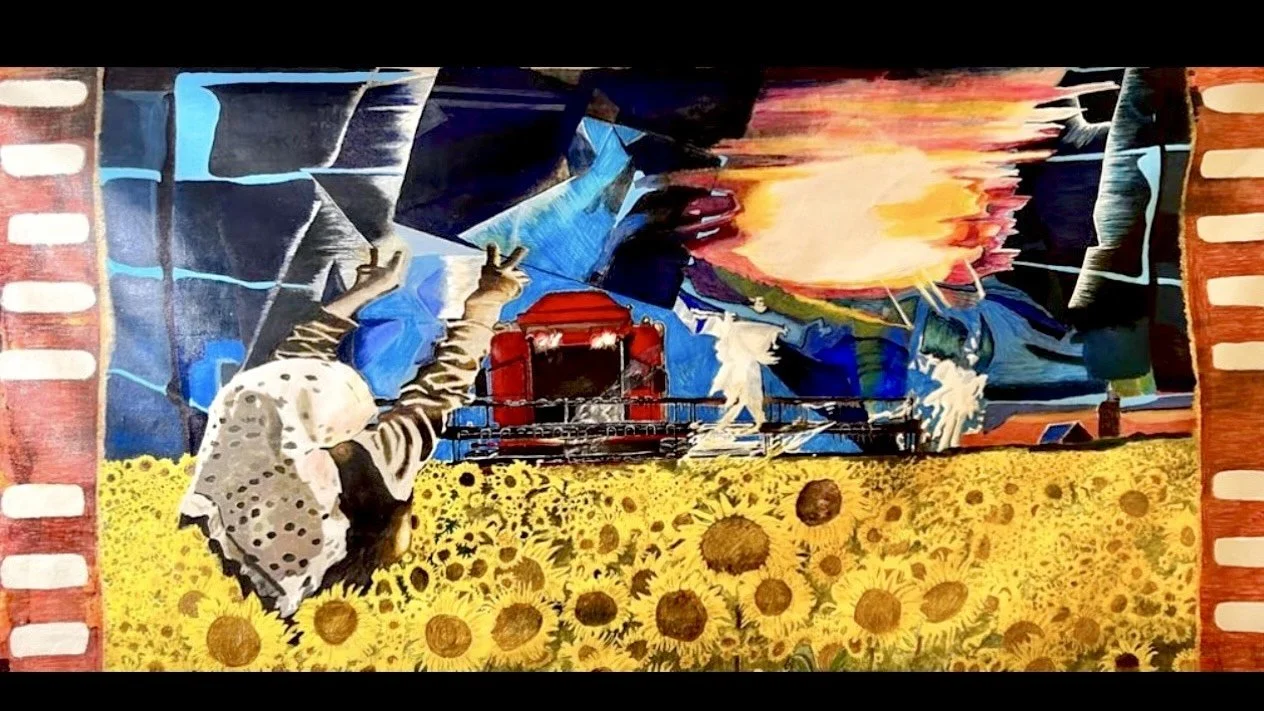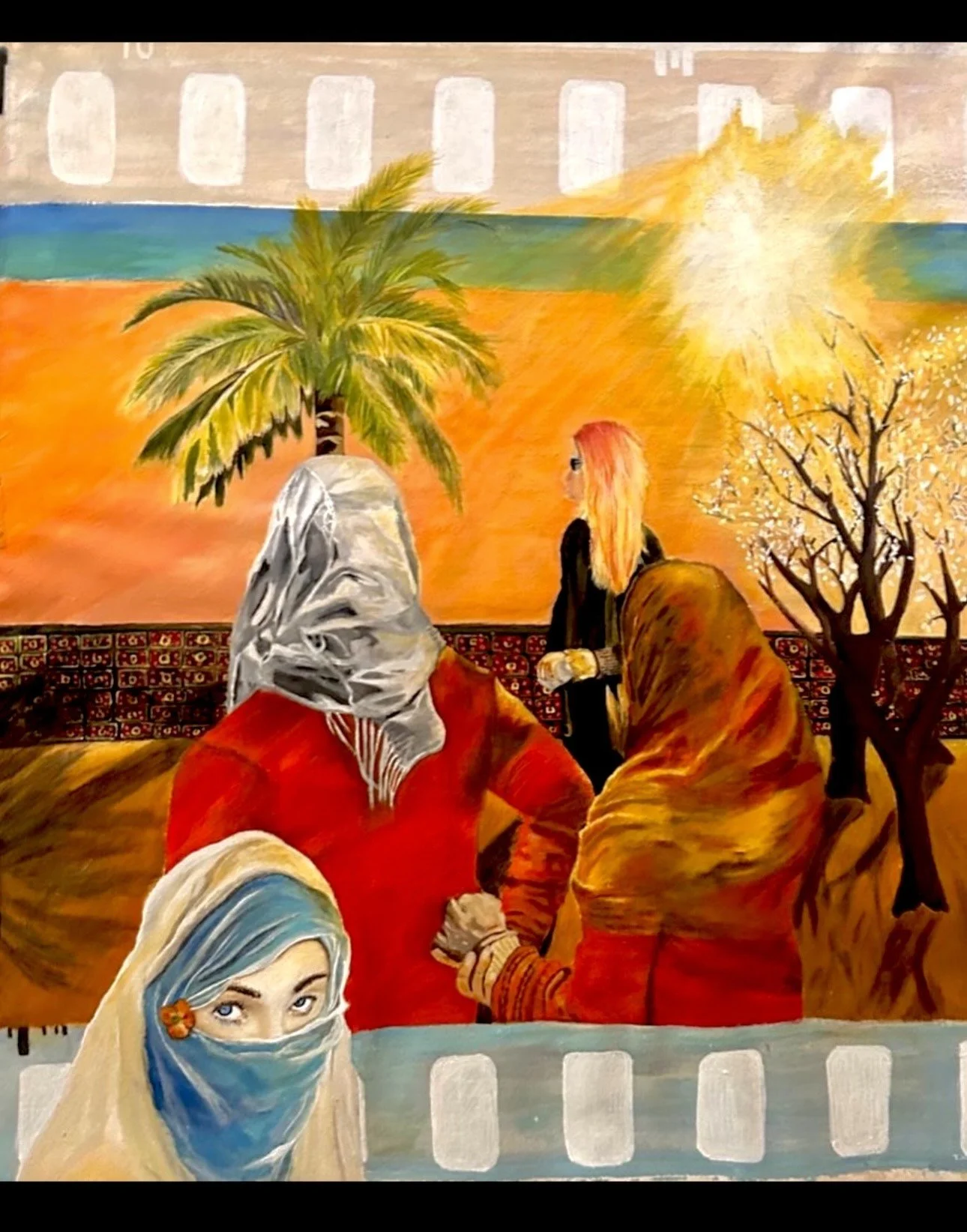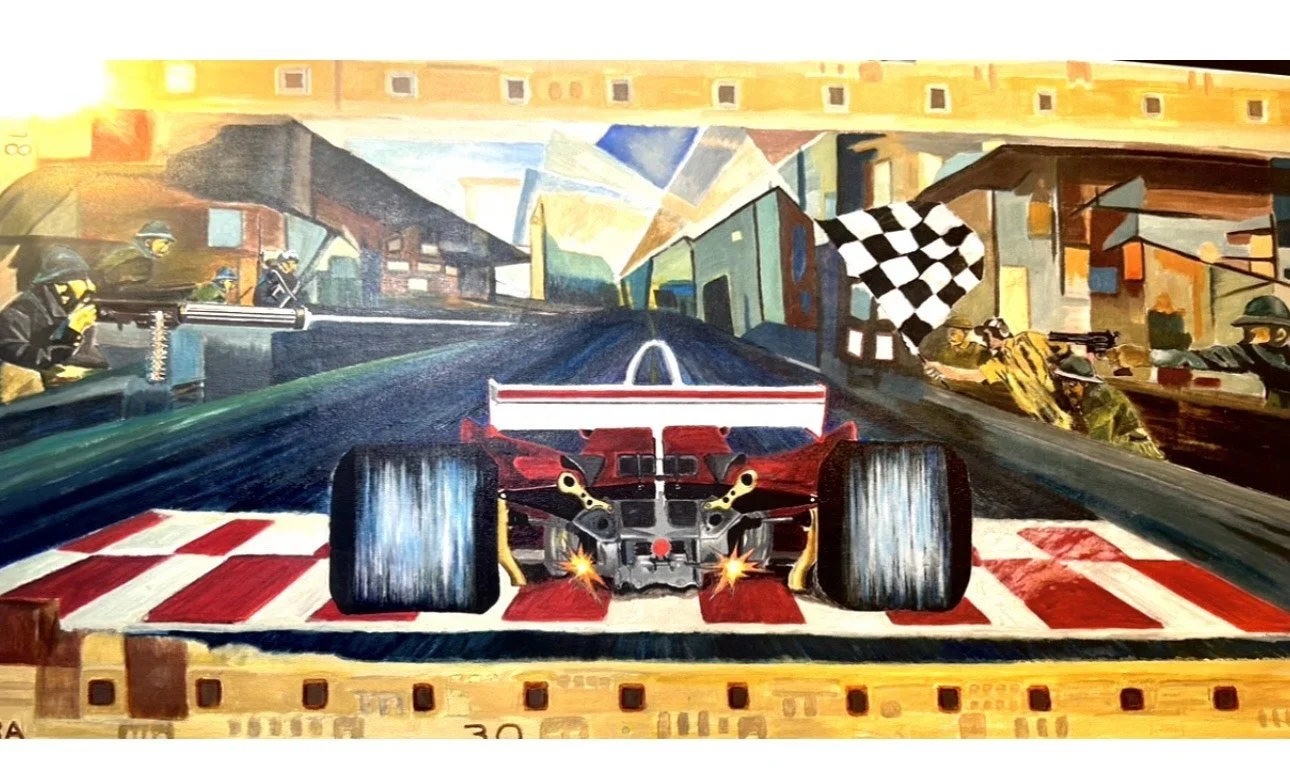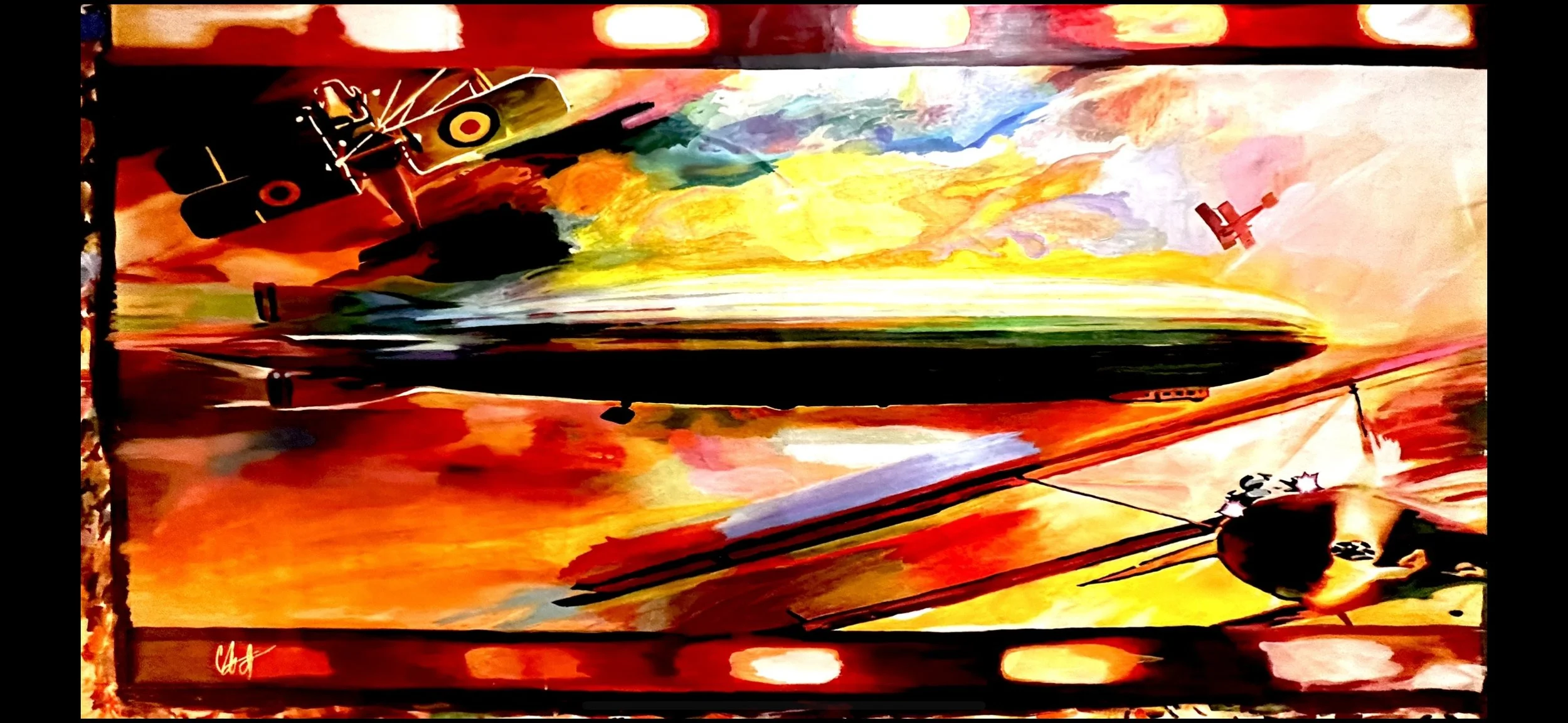Dreams Collection
This exhibition delves into a world of vivid imagination and profound symbolism through a collection of remarkable pieces. 'Poppies and a Pussycat' takes us on a poignant journey through the Cambodian countryside, where children navigate a landscape laden with history and challenges. 'Dreams Interrupted' challenges our perceptions of progress and consequences, while 'Rome is Burning' offers a surreal commentary on the absurdity of conflict. 'Snake Discharmer: pimping out for tips' prompts reflection on exploitation and poverty, and 'The Thresher and the Dreamer' captures the spirit of a Ukrainian peasant amidst turmoil. 'Walking Behind my Wife in Marrakesh' portrays a cultural intersection in Morocco, and 'Race Car' delves into the concept of the 'Thucydides Trap.' Lastly, 'Dirigible (Zeppelin)' invites us to explore the early days of filmmaking and the boundless creativity of that era.
Each piece is a window into a world of meaning and emotion, inviting you to contemplate the complexities of our shared human experience.
Poppies and a Pussycat
In a captivating (surreal) painting set amidst the Cambodian countryside, two children embark on a journey that weaves the tapestry of their homeland's history and challenges. The first child, a boy with a knowing smile, races forward through a landscape of vibrant opium poppies, his bare feet touching the earth. Clutched in his arms is a cat, a symbol of comfort and companionship in a world marked by hardship. Behind him, the second child, a boy with determination in his eyes, follows closely, his outstretched hands longing to touch the elusive feline. This poignant scene carries deep symbolism. The opium poppies underfoot symbolize the complex history of Cambodia's struggles with the drug trade, while the children represent the nation's resilient spirit, forever chasing elusive dreams of a brighter future. The cat, held firmly in the boy's arms, becomes a beacon of hope, signifying the enduring bond between the people and their aspirations for a brighter tomorrow, even in the face of adversity. The forest enveloping them symbolizes the untamed resilience of Cambodia's natural beauty, offering solace and strength as these children navigate their path forward.
Dreams Interrupted
In this striking painting, a young child stands at the forefront, their gaze unwavering and intense as they lock eyes with the viewer. The child is positioned in a vast field of tall grass, the blades swaying gently in the breeze. Behind them, the windmills stretch into the horizon, their giant sails turning amidst a stormy sky. What makes this scene particularly powerful is that some of the windmills are breaking apart as they spin, their wooden frames splintering and sails torn asunder.
This artwork encapsulates profound symbolism, serving as a metaphor for the fragility of human progress and the consequences of unchecked ambition. The child's unwavering stare embodies the responsibility that future generations hold for the choices made today. The windmills, typically a symbol of innovation and renewable energy, become a representation of mankind's industrial pursuits. The breaking windmills signal the perilous risks of relentless development without consideration for environmental consequences. The turbulent sky underscores the urgency of addressing climate change and preserving the delicate balance of nature. In this evocative composition, the child's gaze serves as a reminder that our actions today shape the world that future generations will inherit, prompting us to reflect on the choices we make and their lasting impact on the environment and society.
Rome is Burning
In this Dada-esque triptych, ostriches donning army helmets dash through a war-ravaged terrain, encapsulating the futility of protection in chaos. Their frantic pace reflects the urgency and absurdity of war, while the bombed-out building and raging fire symbolize its destructive unpredictability. A distant biplane dropping bombs underscores the perpetuation of conflict by distant decision-makers. This painting embodies the Dadaist rejection of logic, urging contemplation of violence's senselessness and its impact on all living beings.
Snake Discharmer: pimping out for tips
This painting conveys a poignant commentary on the complex themes of exploitation, poverty, and the vulnerability of children in the context of tourism-driven economies. the meaning behind the imagery:
Naked Child with Flowered Wreath: The naked child adorned with a flowered wreath represents innocence and vulnerability. Their lack of clothing symbolizes their exposure to the harsh realities of life, and the wreath symbolizes a fleeting sense of beauty and purity. Dancing Around a Snake: The child's dance around a snake is a symbol of danger and risk. It highlights the perilous situations in which some children find themselves, forced into performing dangerous acts for the sake of earning money. Tonle Sap Lake in Cambodia: The specific location, Tonle Sap Lake in Cambodia, signifies the backdrop of poverty and economic hardship that often drives families to desperate measures in order to survive. The mother's presence in a small boat tied to the dock reinforces the idea that she is orchestrating this performance. Her outstretched arm, as she attempts to have her child dance around the snake, is a gesture of solicitation for money. The core message of the painting is the exploitation of children for economic gain within the tourism industry. It sheds light on the ethical dilemma faced by tourists who may unwittingly contribute to such exploitation by providing monetary support for such performances.
In essence, this painting serves as a powerful and thought-provoking commentary on the troubling intersection of poverty, tourism, and child exploitation. It invites viewers to reflect on the ethical responsibilities of tourists and the broader systemic issues that perpetuate such situations, urging for greater awareness and action to protect vulnerable children in these contexts.
The Thresher and the Dreamer
This poignant painting captures the spirit and struggle of a Ukrainian peasant amid the backdrop of conflict and destruction.
The central focus is the Ukrainian peasant, a symbol of resilience and the enduring spirit of the Ukrainian people. She stands in a vast field of sunflowers, signifying hope, warmth, and the agricultural richness of Ukraine. The wind-blown scarf wrapped over her head reflects the enduring and unwavering nature of the Ukrainian people in the face of adversity. Her outstretched hands, one making a "peace sign," convey a message of peace and unity. It symbolizes the Ukrainian people's desire for peace amidst turmoil. The imposing red combine tractor, representing Russia, approaches ominously. Its destructive path through the sunflowers symbolizes the devastating impact of war on the Ukrainian landscape and its people. The cracking sky in the background, seemingly breaking and cracking apart, symbolizes the disintegration of the peaceful and stable environment due to conflict. It reflects the shattered hopes and dreams of the nation.
This painting serves as a powerful and emotionally charged allegory for the ongoing conflict in Ukraine. It speaks to the resilience and longing for peace of the Ukrainian people in the face of a destructive force. The contrast between the peaceful sunflower field and the approaching red combine tractor underscores the harsh reality of war and its impact on the nation.
Walking Behind my Wife in Marrakesh
In this captivating painting set in Morocco, the interplay of light, colors, and expressions creates a compelling narrative:
The central figure, a woman with bright red hair, stands bathed in the warm, golden sunlight, which beautifully accentuates her fiery beauty. Her exposed hair represents a bold defiance of tradition, symbolizing individuality and freedom. In the foreground, two women in traditional hijabs stand with their backs turned to the viewer. Their posture suggests both curiosity and apprehension as they gaze at the woman with red hair. This contrast of emotions signifies the tension between tradition and modernity. The two women clutching each other’s hands underscores The fact that there is a strong sense of unity and solidarity. It portrays the close bonds and relationships that exist within traditional communities, even when faced with unfamiliar or unconventional elements. The third woman, in the bottom left corner, wears a hijab adorned with a flower. Her direct gaze with beautiful blue eyes suggests a sense of knowing and understanding. She serves as a bridge between tradition and change, acknowledging the complexities of the evolving world.
The painting captures a moment of cultural collision and connection, where the red-haired woman embodies the spirit of change and self-expression, while the two women in hijabs symbolize the traditions and community bonds of Morocco. The third woman with her gaze conveys a sense of acceptance and wisdom, recognizing the beauty and complexity of the evolving cultural landscape.
Thucydides Trap
"Thucydides Trap" is a thought-provoking painting that skillfully captures the tension of an impending conflict between two superpowers. In the center of the canvas, there's a race car nearing its climax, with the Formula One cars on the cusp of crossing the finish line. On the sidelines, a man waves a large checkered flag, symbolizing the race's conclusion.
However, what makes this painting intriguing and laden with meaning is the stark contrast on both sides of the racetrack. Instead of ordinary spectators, the audience consists of soldiers who are actively engaged in combat. These soldiers are firing guns at their counterparts on the opposing side. This juxtaposition of a seemingly innocuous race with the backdrop of intense warfare is a powerful metaphor for the concept known as the "Thucydides Trap."
The painting serves as a visual commentary on the inevitable conflicts that can arise when an established superpower faces the rise of a new, potentially threatening one. It suggests that, like the athletes in the race, these superpowers are racing towards a perilous outcome, and the presence of armed soldiers in the audience symbolizes the ever-present risk of war in such situations. "Thucydides Trap" is a compelling reminder of the delicate balance between competition and conflict on the global stage.
Thucydides Trap
A while back I was daydreaming and “chasing butterflies” in my mind. I started to imagine what it would be like to be working on the set of a motion picture in the 1920-30’s. During the infancy of the motion picture industry, there was a sense of frenetic creativity. The new art form of motion pictures was still in its infancy. The rules and the formulas for making movies we see today, were not existing. Filmmakers were not “tethered “ to the formulaic approach we see today. The regulations around the safety of the cast and crew seemed to be secondary to “getting the shot”. Simply, the art captured the excitement of this new form of expression. The good and the bad. The movie makers were “flying by the seat of their pants” so to speak”, and this passionate and chaotic, unbridled energy was captured in so many great films of that era.
My painting was inspired by these thoughts and by my great-grandfather, William J. Butler, who worked in the motion picture industry during this era of filmmaking. I wanted to capture the energy and the imaginativeness and unbridled energy of filmmaking during this time.

